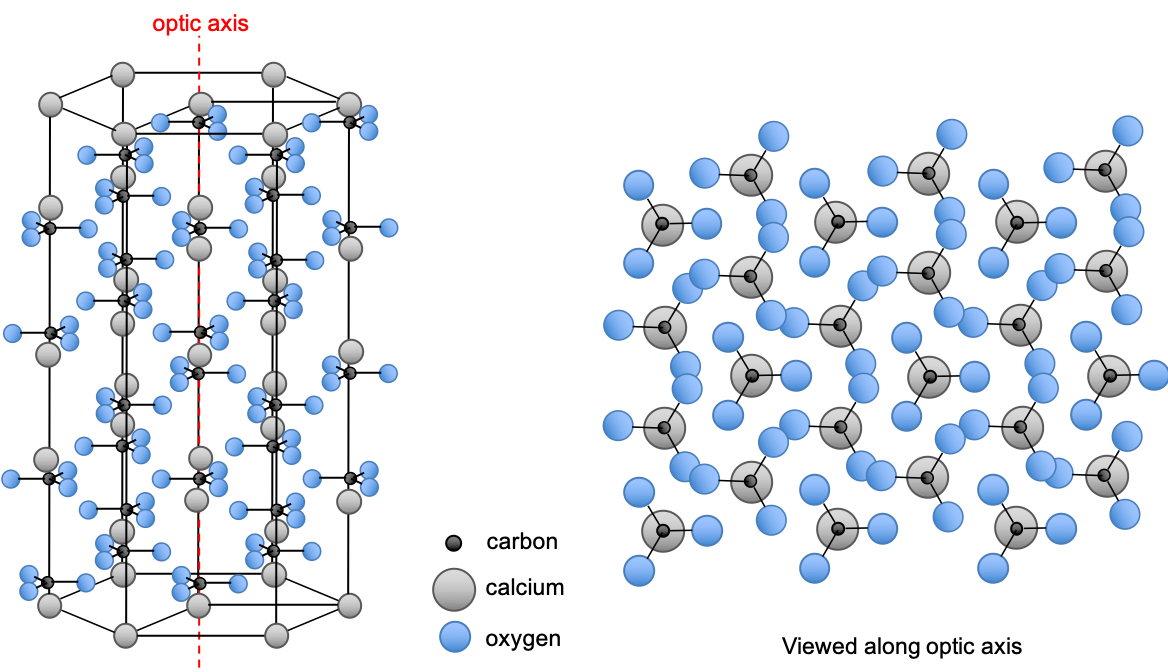Birefringence is the optical property of a material in which an incident ray of light is split into two perpendicularly polarised rays by the material. One material exhibiting strong birefringence is calcite (CaCO3), which has a hexagonal unit cell as shown in the diagram below.

When a single crystal of calcite is oriented in a particular direction, we see layers of atoms arranged symmetrically. Each layer consists of carbonate molecules in a plane and calcium atoms directly above the carbon atoms (see above diagram). The layers are stacked in an ABBAABBA… fashion, where the oxygen atoms in B are rotated 60o relative the oxygen atoms in A. Due to the symmetry of the atoms, a ray of unpolarised light passing perpendicular to the layers (oscillation parallel to the layers) emerges as a single ray of unpolarised light, i.e. it suffers no birefringence. The direction in which the ray that suffers no birefringence travels is called the optic axis of the crystal.

Birefringence occurs when a ray of unpolarised light passes through a calcite crystal, which is oriented relative to the ray as shown in the diagram above. For simplicity, only two orthogonal oscillations of the incident ray are depicted, with the up-down arrows representing polarisation along the plane of the viewer’s screen and the blue dots representing polarisation into the plane of the screen. The surface of the calcite crystal facing the reader and the optic axis of the crystal are parallel to the plane of the screen. As mentioned earlier, oscillations that are perpendicular to the optic axis (i.e. blue dots) suffer no birefringence, with its path unaltered. The ray of such oscillations that emerges from the crystal is called an ordinary ray or o-ray.
The polarisation represented by the double arrows are not travelling perpendicular to the optic axis and encounters electron densities that are not symmetrically distributed. The induced oscillations in different parts of those electron densities reradiate light waves that combine to form a refracted wave. The refracted light travels through the crystal with a different speed and emerges as a separate ray, which is called an extraordinary ray or e-ray. This implies that the crystal has two different refractive indices
and
. The birefringence
of a material is defined as:

Question
Why is the e-ray deflected ‘upwards’ in the crystal?
Answer
The incident ray, with oscillation parallel to the plane of the viewer’s screen, can be further resolved into a component that is perpendicular to the optic axis (oscillation parallel to the optic axis) and one that is parallel to the optic axis (oscillation perpendicular to the optic axis, see diagram below).

We can imagine that the oscillation of the latter component encounters a denser distribution of electrons as it travels along the optic axis in the crystal (refer to the structure of calcite in the earlier diagram) as compared to the other component. Therefore, and the resultant ray is deflected “upwards”.